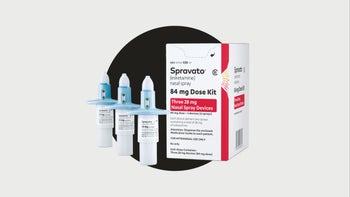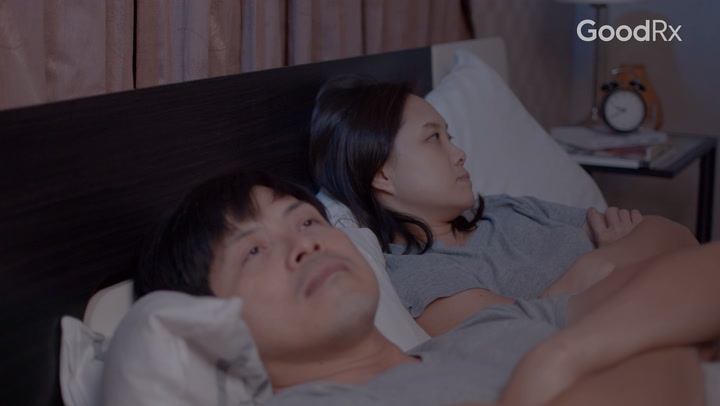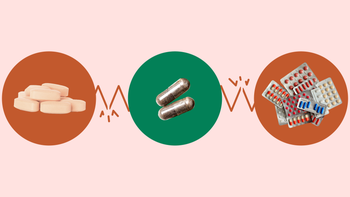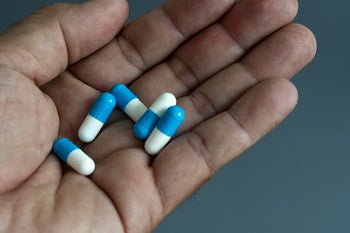
IV Ketamine vs. Spravato: The Top 5 Differences for Hard-to-Treat Depression
Key takeaways:
Ketamine (Ketalar) and Spravato (esketamine) are medications that can manage treatment-resistant depression. Spravato is FDA approved for this use, while ketamine is used off-label for this condition.
These medications treat depression using a similar strategy. But they aren’t administered the same way. Ketamine is typically given as an intravenous (IV) infusion, while Spravato is administered as a nasal spray.
Ketamine and Spravato generally have similar side effects, including dissociation, dizziness, and blood pressure changes. More serious side effects are also possible.
Table of contents

For some people, everyday antidepressants just don’t do the trick. If this is the case for you, rest assured that there are several other treatment options to choose from. This includes ketamine (Ketalar) and its close relative, Spravato (esketamine).
Ketamine may sound especially familiar. It’s been used as an anesthetic and pain killer for over 50 years. Over time, ketamine has been observed to have antidepressant effects as well. Ketamine is now often prescribed off-label to manage treatment-resistant depression.
Spravato is chemically distinct from ketamine, but it works in a similar way. It’s FDA approved to manage treatment-resistant depression in adults by itself or in combination with an oral antidepressant.
ED treatment on your terms
Build a personalized treatment plan and get erectile meds delivered discreetly. Subscriptions start at just $18/mo.

GoodRx is NOT insurance. Cancel anytime. GoodRx Health information and resources are reviewed by our editorial staff with medical and healthcare policy and pricing experience. See our editorial policy for more detail. We also provide access to services offered by GoodRx and our partners when we think these services might be useful to our visitors. We may receive compensation when a user decides to leverage these services, but making them available does not influence the medical content our editorial staff provides.
If you’re looking for another option to manage hard-to-treat depression, ketamine or Spravato may be a good fit. But they aren’t one in the same. Here, we’ll detail the top five differences between them.
1. Who is eligible to receive ketamine and Spravato?
Ketamine and Spravato aren’t considered first-choice therapies for depression. But they’re both promising options when needed.
Ketamine and Spravato are good options to consider if you have severe depression or if standard depression treatments haven’t worked well. Spravato is also approved to treat people with depression who are experiencing thoughts of suicide or self harm (when used in combination with an oral antidepressant).
Reminder: Between the two, only Spravato is FDA approved for treatment-resistant depression. Ketamine is administered as an off-label treatment for this use.
When to avoid IV ketamine and Spravato
Ketamine and Spravato aren’t the best options for everyone. Due to certain risks, some groups of people should avoid receiving them.
You should avoid ketamine if you:
Have high or unstable blood pressure
Have schizophrenia
Have a history of substance misuse
Are pregnant or nursing
Are younger than 16 years old
You shouldn’t receive Spravato if you:
Have ever had a brain bleed
Have an arteriovenous malformation (an abnormal tangling of blood vessels)
Have an aneurysm or similar blood vessel disease
Have a history of substance misuse
Are pregnant or nursing
Are younger than 18 years old
Treatment-resistant doesn’t mean untreatable: Explore the different options to help improve depression symptoms when other treatments haven’t worked.
How does ketamine work for depression? Though ketamine was created as an anesthetic, it has gained attention for its use in depression.
Another fast-acting antidepressant: Here’s how Spravato stacks up to Auvelity, an oral tablet that can begin working in about a week.
2. How do ketamine and Spravato work for severe depression?
We don’t know for sure how ketamine and Spravato work for severe depression. What is known, though, is that they both affect certain aspects of your brain’s activity.
Ketamine is thought to affect glutamate levels, a chemical messenger in the brain that’s linked to mood and emotions. Ketamine also has an effect on opioid receptors, which impacts pain, mood, and your body’s reward system.
Ketamine may also potentially affect the Default Mode Network (DMN). This part of your brain is believed to help control thoughts about yourself, including negative ones. Depression has been linked to increased DMN activity, and ketamine may act to lower it.
Spravato works similarly to ketamine, but it may affect glutamate more than ketamine does.
3. How does the administration process vary between ketamine and Spravato?
Ketamine and Spravato have similar treatment goals. But they aren’t administered the same way.
Ketamine is administered in several different ways. Most people receive it as an injection into their vein (IV), muscle (IM), or skin. Of these, the IV infusion is most common. It also has the most research behind it.
Spravato is only available as a nasal spray. It’s typically given twice weekly during the first 4 weeks of treatment. It’s then given once weekly or once every other week thereafter. Unlike most other nasal sprays, Spravato can’t be administered at home. It must be administered by a healthcare professional due to side effect risks. We’ll discuss these later.
Despite these differences, ketamine and Spravato both start working quickly. This is due to how they’re administered. Ketamine’s effects are typically felt within 1 hour of receiving a dose (or sooner). Spravato’s effects are typically noticeable between 2 and 4 hours after administration.
Keep in mind: Work with a trusted healthcare professional to locate a reputable ketamine clinic in your area. Ketamine isn’t officially approved for treatment-resistant depression, so it’s not regulated the same way Spravato is.
4. IV ketamine vs. Spravato: Which is more effective for depression?
Research is mixed on how IV ketamine stacks up to Spravato. There isn’t one widely accepted answer.
According to one meta analysis, IV ketamine appears to be more effective than Spravato for managing hard-to-treat depression. In this review, ketamine was not only found to reduce depressive symptoms and sustain this effect more than Spravato, but it also didn’t lead to as many people stopping the medication due to side effects. A small comparative analysis also favored IV ketamine overall, but the two medications had similar response and remission rates.
On the flip side, a small study (with no randomization or blinding) found that IV ketamine and Spravato produced similar effects when treating depression and sustaining this response. This research did find, however, it took more Spravato treatments to reach this response compared to IV ketamine.
Despite this, both ketamine and Spravato have demonstrated that they can effectively manage hard-to-treat depression. It’s important to weigh the risk and benefits of each medication with your psychiatrist before trying either one.
5. What are the side effects of ketamine and Spravato?
Ketamine and Spravato tend to cause many of the same side effects. But the side effects aren’t exactly the same.
Common ketamine side effects include:
Dissociation (feeling detached from reality)
Drowsiness
Disorientation
Dizziness
Anxiety
Nausea and vomiting
Blurred vision
Numbness
Fast heart rate and high blood pressure
Difficulty speaking
The most common Spravato side effects include:
Dissociation
Drowsiness
Dizziness
Anxiety
Nausea and vomiting
Blurred vision
Numbness
Blood pressure and heart rate elevations
Altered taste
Nose or throat irritation
Serious side effects
Spravato carries a few boxed warnings. These are the FDA’s most serious type of medication warning. They include:
Suicidal thoughts and behaviors
Sedation
Dissociation
Respiratory depression (slowed breathing)
Dependence and misuse
Because of risks like these, you can only receive Spravato if you’re enrolled in the Spravato Risk Evaluation and Mitigation Strategies (REMS) medication safety program. This FDA-established program helps make sure that Spravato’s benefits outweigh its risks. Your psychiatrist will be in charge of enrolling you in the Spravato REMS program.
Ketamine has similar risks. But since it’s not officially approved for treatment-resistant depression, it doesn’t technically have a REMS program.
What are the best alternatives to ketamine and Spravato for treatment-resistant depression?
Even though the name makes it sound unmanageable, there are ways to tackle treatment-resistant depression — even if ketamine or Spravato aren’t good options for you.
One option is trying a different type of antidepressant. For instance, if selective serotonin reuptake inhibitors (SSRIs), such as citalopram (Celexa) or sertraline (Zoloft), haven’t made a difference, you may receive a serotonin and norepinephrine reuptake inhibitor (SNRI), such as venlafaxine (Effexor XR), instead.
Alternatively, your psychiatrist may recommend adding another antidepressant to your current treatment regimen. Atypical antidepressants, such as bupropion (Wellbutrin XL), and antipsychotics, such as aripiprazole (Abilify), may provide some benefit in these situations. These target different brain chemicals than other antidepressants.
Can you take Spravato and IV ketamine together?
No, you shouldn’t receive Spravato and IV ketamine at the same time. They work similarly, so taking them together wouldn’t offer any extra benefits. It would also increase the risk of side effects.
It’s also important to mention that ketamine and Spravato are Schedule 3 controlled substances. This means that they have a potential for misuse and a low-to-moderate risk of dependence. These risks are higher if they’re combined.
The bottom line
Ketamine (Ketalar) and Spravato (esketamine) can help manage treatment-resistant depression. They’re both effective medications, but mixed evidence suggests that ketamine may be slightly more effective than Spravato. Only Spravato is officially FDA approved for this use, though. They also have different routes of administration. Ketamine is typically injected into a vein, while Spravato is administered as a nasal spray. Spravato is only available through a FDA-established medication safety program.
Why trust our experts?



References
Abdallah, C. G., et al. (2018). The effects of ketamine on prefrontal glutamate neurotransmission in healthy and depressed subjects. Neuropsychopharmacology.
Ahuja, S., et al. (2022). Real-world depression, anxiety and safety outcomes of intramuscular ketamine treatment: A retrospective descriptive cohort study. BMC Psychiatry.
Bahji, A., et al. (2021). Comparative efficacy of racemic ketamine and esketamine for depression: A systematic review and meta-analysis. Journal of Affective Disorders.
Cavenaghi, V. B., et al. (2021). Subcutaneous ketamine in depression: A systematic review. Frontiers in Psychiatry.
Evans, J. W., et al. (2018). Default mode connectivity in major depressive disorder measured up to 10 days after ketamine administration. Biological Psychiatry.
Hamilton, J. P. (2015). Depressive rumination, the default-mode network, and the dark matter of clinical neuroscience. Biological Psychiatry.
Janssen Pharmaceuticals. (2025). Spravato (esketamine) nasal spray, CIII [package insert].
Johnson & Johnson. (2025). Spravato (esketamine) approved in the U.S. as the first and only monotherapy for adults with treatment-resistant depression.
Krystal, J. H., et al. (2020). A new rapid-acting antidepressant. Cell.
Nikayin, S., et al. (2022). Evaluation of the trajectory of depression severity with ketamine and esketamine treatment in a clinical setting. JAMA Psychiatry.
Rosenbaum, S. B., et al. (2024). Ketamine. StatPearls.
Singh, B., et al. (2022). Comparative effectiveness of intravenous ketamine and intranasal esketamine in real-world setting among patients with treatment refractory depression. CNS Spectrums.
Spravato. (n.d.). Spravato REMS (risk evaluation and mitigation strategy).
Wang, S., et al. (2021). Rapid onset of intranasal esketamine in patients with treatment resistant depression and major depression with suicide ideation: A meta-analysis. Clinical Psychopharmacology and Neuroscience.
Zyck, S., et al. (2024). Arteriovenous malformations of the central nervous system. StatPearls.
For additional resources or to connect with mental health services in your area, call SAMHSA’s National Helpline at 1-800-662-4357. For immediate assistance, call the National Suicide Prevention Lifeline at 988, or text HOME to 741-741 to reach the Crisis Text Line.

























